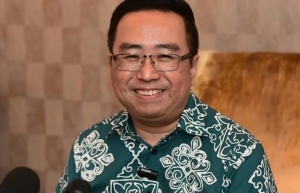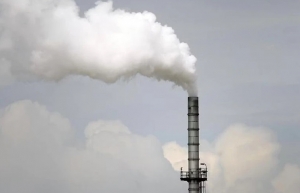Potential is there for hydrogen alternative
Could you shed some light on the development of Vietnam’s fledgling green hydrogen market?
It is in its nascent stages, but there’s been significant momentum in recent years. The government has made notable strides through initiatives like the Power Development Plan VIII and most recently, the national hydrogen energy development strategy, all of which highlight hydrogen as a solution for achieving the country’s net-zero emissions goals.
 |
| Markus Bissel, project director of the International Hydrogen Ramp-up Programme from GIZ Vietnam |
In the private sector, there is a notable surge in interest and investment in hydrogen. Several large-scale projects have been announced in provinces like Quang Tri, Ben Tre, Tra Vinh, Bac Lieu, and Tien Giang, driven by both local and foreign investors. These initiatives, backed by billions of dollars, are aimed at serving both domestic consumption and export markets. Additionally, smaller-scale projects are emerging, particularly in niche sectors such as the textile and glass manufacturing industry.
Currently, Vietnam’s hydrogen production stands at 500,000 tonnes per year, mainly serving the chemical and oil and gas sectors. These are significant sources of emissions, but with the right policies, there’s considerable potential for transitioning to a greener economy, leveraging hydrogen as a clean energy alternative.
What are some highlights of the national hydrogen strategy and supportive policies to promote investments in the market?
The February approval signalled a strong commitment to developing a hydrogen ecosystem anchored in renewable energy. The strategy outlines ambitious goals, including producing between 100,000 and 500,000 tonnes of hydrogen by 2030, and scaling up to 10-20 million tonnes by 2050.
It also aims to have hydrogen contribute to 10 per cent of the country’s energy consumption. To achieve this, the strategy promotes the integration of hydrogen across various industries, such as transportation, chemicals, steel, and oil and gas, while emphasising the importance of building essential infrastructure, including harbours, storage facilities, pipelines, and compressors.
In addition to this, several measures are in place that could further boost the industry. For instance, the exemption of import taxes on electrolysers used for hydrogen production helps lower costs for investors. Furthermore, the recent introduction of the direct power purchase mechanism allows green hydrogen producers to directly source renewable energy from wind and solar projects.
How do you assess the potential of Vietnam’s hydrogen market?
Vietnam’s hydrogen market holds substantial potential, driven by the need to decarbonise key industrial sectors and align with global low-emission regulations. The adoption of green hydrogen and power-to-X technologies present a promising solution for addressing emissions in hard-to-abate sectors, significantly contributing to the nation’s emission reduction goals.
As an export-driven economy, Vietnam is positioned to leverage green hydrogen in sectors like steel, fertiliser, and shipping, which are aligned with the low-emission regulations of importing nations. In the short term, these sectors will likely drive advancement due to their immediate demand for cleaner tech.
As policies evolve and the cost of green hydrogen production technologies decreases, we anticipate broader application across other industries, including power generation, refining, and transportation. According to recent studies, the local hydrogen market in Vietnam could potentially expand to between five million and 16 million tonnes by 2050, depending on various local and global factors.
The development of Vietnam’s hydrogen market is driven by several key factors: decarbonisation goals, export opportunities, technological advances, supportive policies, and the international carbon credit market. Overall, Vietnam’s hydrogen market is poised for significant growth.
What are your recommendations for Vietnam to fully harness the potential of green hydrogen?
To fully harness the potential of green hydrogen, Vietnam should consider a multi-faceted approach that addresses both immediate and long-term needs of the hydrogen market.
There are several key recommendations. Firstly, policies that stimulate local market demand is crucial. This includes creating incentives for businesses and industries to adopt green hydrogen, establishing subsidies or tax breaks for early adopters, and setting clear, ambitious targets for hydrogen use across various sectors.
To make green hydrogen competitive, Vietnam should prioritise policies aimed at lowering the costs of renewable energy production. Also, establishing a comprehensive infrastructure is essential for the successful implementation and trade of green hydrogen. Policies should focus on developing infrastructure such as storage facilities, pipelines, and harbours. This will support both domestic use and international exports.
Engaging in international cooperation can provide valuable insights into hydrogen technology and market development. By collaborating with global leaders in hydrogen technology and participating in international forums, Vietnam can stay abreast of technological advancements, market trends, and best practices, which can help accelerate the development of its own hydrogen industry.
Encouraging collaboration between project developers, technology suppliers, and retaining is vital. Joint efforts can lead to more effective project execution, streamlined processes, and innovative solutions.
 | Malaysia eyes developing ecosystem based on hydrogen energy by 2030 The implementation of Malaysia’s Hydrogen Economy and Technology Roadmap (HETR) is expected to generate income of up to 12.1 billion MYR (2.5 billion USD), with an estimated contribution of between 49-61 billion MYR to the country’s Gross Domestic Product by 2030, according to Minister of Science, Technology and Innovation Chang Lih Kang. |
 | Singapore steps up research on hydrogen use, sustainable chemicals To help decarbonise Singapore’s energy and industrial sectors, the country has launched a 90 million USD programme to further national research into areas such as hydrogen utilisation and the production of greener chemicals and fuels, like sustainable aviation fuel. |
 | Australia's Pure Hydrogen to supply hydrogen fuel for vehicles in Vietnam Australian clean energy company Pure Hydrogen Corporation Limited announced on July 22 that it has signed an MoU with the Vietnam ASEAN Hydrogen Club (VAHC) to supply hydrogen fuel for vehicles in Vietnam. |
 | Siemens Energy to develop green hydrogen in Binh Dinh German energy giant Siemens Energy expressed its desire to implement the Green Hydrogen Gas System project in Binh Dinh during a visit by a delegation from the central province to Berlin on July 17. |
What the stars mean:
★ Poor ★ ★ Promising ★★★ Good ★★★★ Very good ★★★★★ Exceptional
Related Contents
Latest News
More News
- Heavy industries set for pilot greenhouse gas quotas (December 25, 2025 | 10:00)
- Swedfund invests in MSME growth and climate action in Vietnam (December 19, 2025 | 11:42)
- GreenYellow brings solar energy to light up remote schools in Tuyen Quang province (December 19, 2025 | 08:00)
- Charge+, Grab partner to develop EV charging network in Vietnam (December 18, 2025 | 17:11)
- Linking sci-tech and innovation to Vietnam’s net-zero future (December 18, 2025 | 14:31)
- Driving double-digit growth through green and circular transformation in Vietnam (December 17, 2025 | 09:00)
- Standard Chartered and ACCA deepen collaboration to develop Vietnam’s talent for a sustainable future (December 15, 2025 | 18:18)
- Schaeffler reports strong early output from Dong Nai solar project (December 12, 2025 | 15:16)
- Forestry conference highlights biodiversity and sustainability goals (December 09, 2025 | 13:35)
- Home Credit honoured among top 10 sustainable companies in trade and services (December 09, 2025 | 12:18)

 Tag:
Tag:



















 Mobile Version
Mobile Version